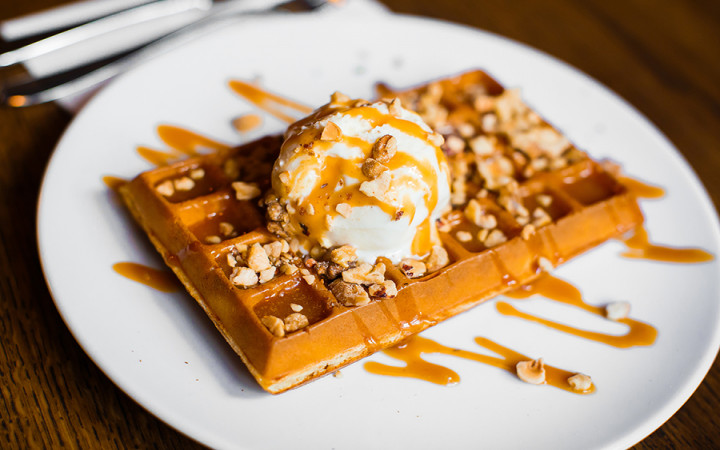Today’s Wonder of the Day was inspired by Molly. Molly Wonders, “How do you make caramel?” Thanks for WONDERing with us, Molly!
When it comes to your sweet tooth, which sweet treats tempt you? For some, nothing but a big bowl of ice cream will do. Others may prefer candy bars. Of course, a healthier alternative would be a naturally-sweet piece of fruit.
One thing's for sure: there's no shortage of sweet treats to choose from. Today's Wonder of the Day will take a closer look at an ooey, gooey, deliciously-sweet, chewy treat that's been a favorite for hundreds of years: caramel.
Some sweet treats are more versatile than others. Fans of caramel will tell you that there's seemingly no end to the ways caramel can be used.
By itself, caramel makes a tasty, chewy treat that's a hit year-round. It can also be made into a sauce that's a delight when drizzled over ice cream or the whipped cream that tops your frozen coffee drink. If you're a fan of candy, you already know caramel is a key ingredient in many different popular candy bars.
Caramel can also turn ordinary fruits and vegetables into decadent desserts. Don't believe us? Have you ever tried a caramel apple or apple slices dipped in caramel? As for vegetables, fans of popcorn will testify that caramel corn is a treat that can't be beat.
So who invented this tasty, versatile candy? Given how easy it is to make with just a few simple ingredients, it's impossible to pinpoint who first made caramel or when they did it. Historians do know that it's been around for centuries.
Caramel is created by boiling sugar and water and then adding milk and fat while heating the mixture to approximately 245˚ F and stirring continually. Different types of caramel can be made by using different types of sugars, milks, and fats.
The characteristic look, taste, and smell of caramel occur when the mixture begins to burn, creating a golden brown substance that remains flexible. This precise heat gives caramel its chewy texture that results from the interaction of the sugars and milk and fat solids, a chemical reaction scientists call the Maillard reaction.
If you continue to heat caramel to about 290˚ F, it turns into toffee, which loses its flexibility and becomes hard and brittle. Caramel makers must monitor temperature carefully to make sure it remains chewy. It also helps to use a high-quality fat, such as butter, to improve taste.
If you're a fan of caramel apples, those are a comparatively recent invention. Historians believe Kraft Foods employee Dan Walker invented them some time in the 1950s when he experimented with leftover Halloween caramels.
He melted them down and added apples. The rest, as they say, is history. Caramel apples were made by hand for many years until Vito Raimondi of Chicago, Illinois, patented the first automated caramel apple machine in 1960.




